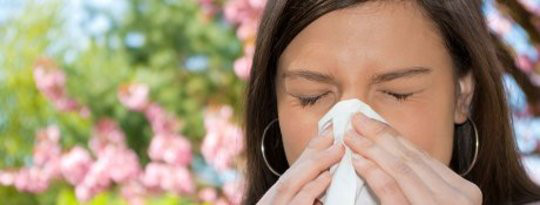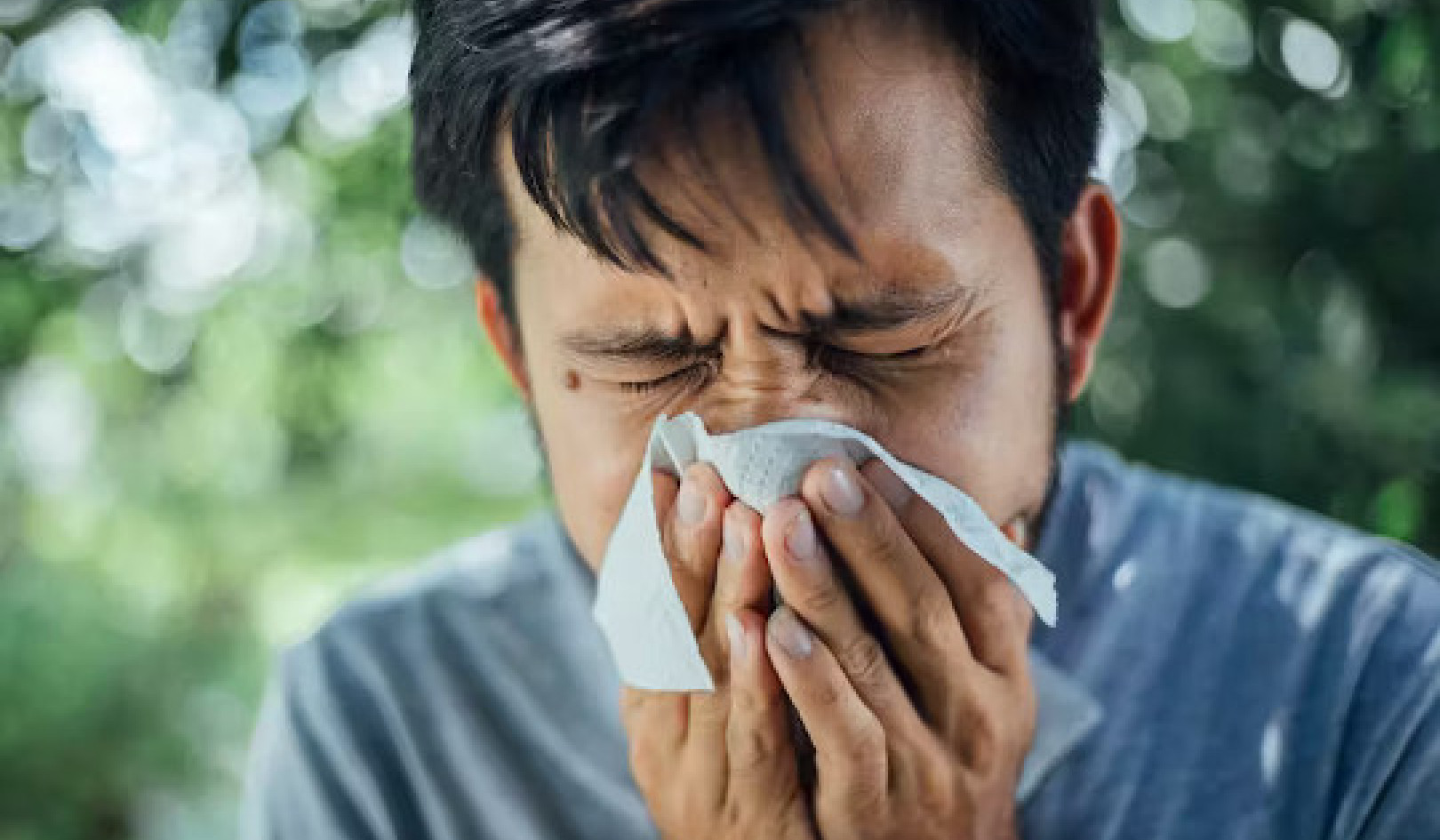
Allergic reactions occur when the body wrongly defends itself against something that is not dangerous. A healthy immune system defends against invading bacteria and viruses. During allergic reactions, however, the immune system fights harmless materials, such as pollen or mold, with production of a special class of antibody called immunoglobulin E (IgE)
Ragweed And Other Weeds
Ragweed and other weeds, such as curly dock, lambs quarters, pigweed, plantain, sheep sorrel, and sagebrush are prolific producers of pollen allergens. Ragweed season runs from August to November, but pollen levels usually peak by mid-September in many areas in the country. Pollen counts are highest in the morning, and on dry, hot, windy days.
Protecting Yourself Weed Pollens
- Between 5:00 and 10:00 in the morning, stay indoors. Save outside activities for late afternoon or after a heavy rain, when pollen levels are lower.
- Keep windows in your home and car closed to lower exposure to pollen. Keep cool with air conditioners. Don't use window or attic fans.
- Use a dryer, not a line outside; dry your clothes and avoid collecting pollen on them.
Grass Pollens
Grass pollens are regional as well as seasonal. Their levels also are affected by temperature, time of day, and rain. Only a small percentage of North America's 1,200 grass species cause allergies, including: bermuda grass, johnson grass, Kentucky bluegrass, sweet vernal grass, timothy grass, and orchard grass
Protecting Yourself Grass Pollens
Between 5:00 and 10:00 a.m., stay indoors. Save outside activities for late afternoon or after a heavy rain, when pollen levels are lower.
Get The Latest By Email
- Keep windows in your home and car closed to lower exposure to pollen.
- Keep cool with air conditioners. Don't use window or attic fans.
- Use a clothes dryer, not a line outside, to avoid collecting pollen on them.
- Have someone else mow your lawn. If you mow, wear a mask.
Tree Pollens
Trees produce pollen earliest, as soon as January in the south, and as late as May and June in the northeast. They release huge amounts that can be distributed miles away. Fewer than 100 kinds of trees cause allergies. The most common tree allergy is against oak, but others include catalpa, elm, hickory, sycamore, and walnut.
Protecting Yourself From Tree Pollens
Follow the same protective strategies related to time of day, closed windows, and clothes dryers noted in "Protecting yourself" under Grass Pollen, above.
Seasonal Allergies: Nuisance or Real Health Threat?
For most people, hay fever is a seasonal problem—something to endure for a few weeks once or twice a year. But for others, such allergies can lead to more serious complications, including sinusitis and asthma.
Sinusitis is one of the most commonly reported chronic diseases and costs almost $6 billion a year to manage. It is caused by inflammation or infection of the four pairs of cavities behind the nose. Congestion in them can lead to pressure and pain over the eyes, around the nose, or in the cheeks just above the teeth. Chronic sinusitis is associated with persistent inflammation and is often difficult to treat. Extended bouts of hay fever can increase the likelihood of chronic sinusitis. But only half of all people with chronic sinusitis have allergies.
Asthma is a lung disease that narrows or blocks the airways. This causes wheezing, shortness of breath, coughing, and other breathing difficulties. Asthma attacks can be triggered by viral infections, cold air, exercise, anxiety, allergens, and other factors. Almost 80 percent of people with asthma have allergies, but we do not know to what extent the allergies trigger the breathing problems. However, some people are diagnosed with allergic asthma because the problem is set off primarily by an immune response to one or more specific allergens. Most of the time, the culprit allergens are those found indoors, such as pets, house dust mites, cockroaches, and mold. Increased pollen and mold levels have also been associated with worsening asthma.
Diagnosis and Testing for Allergies
Knowing exactly what you are allergic to can help you lessen or prevent exposure and treat your reactions. There are several tests to pinpoint allergies:
- Allergy skin tests—Allergy skin testing is considered the most sensitive testing method and provides rapid results. The most common test is the "prick test," which involves pricking the skin with the extract of a specific allergen, then observing the skin's reaction.
- Serum-specific IgE antibody testing—These blood tests provide information similar to allergy skin testing.
Treatment for Allergies
For allergy sufferers, the best treatment is to avoid the offending allergens altogether. This may be possible if the allergen is a specific food, like peanuts, which can be cut out of the diet, but not when the very air we breathe is loaded with allergens, such as ragweed pollen. Various over-the-counter or prescription medications can relieve symptoms.
- Antihistamines. These medications counter the effects of histamine, the substance that makes eyes water and noses itch and causes sneezing during allergic reactions. Sleepiness was a problem with the oldest antihistamines, but the newest drugs do not cause such a problem.
- Nasal steroids. These anti-inflammatory sprays help decrease inflammation, swelling, and mucus production. They work well alone and, for some people, in combination with antihistamines; in recommended doses, they are relatively free of side effects.
- Cromolyn sodium. A nasal spray, cromolyn sodium can help stop hay fever, perhaps by blocking release of histamine and other symptom-producing chemicals. It has few side effects.
- Decongestants. Available in capsule and spray form, decongestants may reduce swelling and sinus discomfort. Intended for short-term use, they are usually used in combination with antihistamines. Long-term usage of spray decongestants can actually make symptoms worse, while decongestant pills do not have this problem.
- Immunotherapy. Immunotherapy (allergy shots) might provide relief for patients who don't find relief with antihistamines or nasal steroids. Allergy shots alter the body's immune response to allergens, thereby helping to prevent allergic reactions. They are the only form of treatment that can induce long-lasting protection for several years after therapy is stopped. Current immunotherapy treatments are limited because of potential allergic reactions; rarely, these can be severe.
Is It a Cold or an Allergy?
|
Symptoms |
Cold |
Airborne Allergy |
|---|---|---|
|
Cough |
Common |
Sometimes |
|
General Aches, Pains |
Slight |
Never |
|
Fatigue, Weakness |
Sometimes |
Sometimes |
|
Itchy Eyes |
Rare or Never |
Common |
|
Sneezing |
Usual |
Usual |
|
Sore Throat |
Common |
Sometimes |
|
Runny Nose |
Common |
Common |
|
Stuffy Nose |
Common |
Common |
|
Fever |
Rare |
Never |
|
Duration |
3 to 14 days |
Weeks (for example, 6 weeks for ragweed or grass pollen seasons) |
|
Treatment |
Cold |
Airborne Allergy |
|
Antihistamines Decongestants Nonsteroidal anti-inflammatory medicines |
Antihistamines Nasal steroids Decongestants |
|
|
Prevention |
Cold |
Airborne Allergy |
|
Wash your hands often with soap and water. Avoid close contact with anyone with a cold. |
Avoid those things that you are allergic to, such as pollen, house dust mites, mold, pet dander, cockroaches. |
|
|
Complications |
Cold |
Airborne Allergy |
|
Sinus infection Middle ear infection Asthma exacerbation |
Sinus infection Asthma exacerbation |










